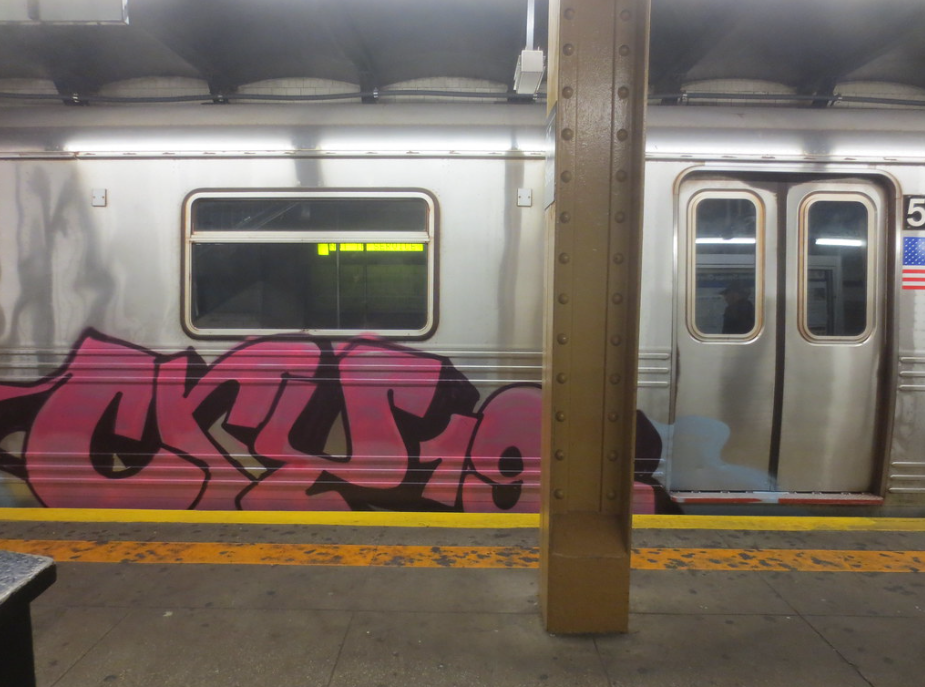I’ve never paid much attention to the Oscars, but I have noticed that public transit plays a leading role in many of my favorite movies. Despite which movies win Oscars this year, transit is always a winner! Here are some ways in which public transit has been in the spotlight.
Transit as a Plot Point

Who Framed Roger Rabbit? won an Oscar in 1989 for Best Visual Effects. If there were an Oscar category for Best Fictional Transit System, it would win that as well. In Roger Rabbit’s movie universe, 1940s Los Angeles was a transit paradise. “Who needs a car in LA?” exclaims Eddie, played by Bob Hoskins. “We have the greatest public transportation system in the world!”
The entire plot of the movie revolves around a car-obsessed villain. Judge Doom (Christopher Lloyd) wants to dismantle the public transit system to build a highway. To do so, he must raze Toontown, home of the movie’s cartoon characters. This is (evil) city planning at its core!
Transit was also integral to the plot of 2006’s Stranger Than Fiction. Harold, played by Will Ferrell, relies on the Chicago bus system to get to his job every day. He suddenly hears an author (Emma Thompson) narrating his daily life. The major plot point begins when Harold must reset his watch. In doing so, Harold’s daily timeline changes, which causes him to be chronically early for the bus. This results in Harold saving a young boy’s life, when Harold pushes him out of the way of an oncoming bus.
In another crucial scene, we see Harold reading the manuscript on a city bus. He is completely invested, continuing to read even after the bus has completed its stops and ends its day at the bus depot. Throughout the movie, I rooted for Harold as a dedicated public transit user!
Transit as a Setting
Coming to America, a 1988 rom com starring Eddie Murphy, has so many great scenes—including one on the New York City subway. Murphy plays Prince Akeem, who has come to America to find a wife who wants him for his personality instead of his status. He becomes infatuated with American-born Lisa and tries to disguise his wealth from her. But she finds out and is angry that he lied to her. Akeem begs her to take him back on a subway car, completely unaffected by the graffiti, dozens of staring people, and even one older woman who propositions him. (Don’t worry—he gets the girl in the end.) If a wealthy prince can take the subway, anyone can!

While 1990’s Ghost may be best known for Demi Moore and Patrick Swayze playing with clay (along with earning Whoopi Goldberg an Oscar), the iconic scene for me is another one on New York City transit. Shortly after Swayze’s character, Sam, realizes he is a ghost, he seeks out another ghost he saw on the subway. Sam wants to be able to move items so he can communicate with the living, so he seeks out the subway ghost’s tutelage. The subway train provides a backdrop for Sam to learn crucial ghost skills, which he utilizes at the conclusion to thwart the villain’s plans.
Then in 1992, a bus gets almost as much screentime as Geena Davis and Tom Hanks in A League of Their Own, which catalogues a woman’s professional baseball team during World War II. The team tours between various cities via bus, on which friendships are forged, songs are composed, and one woman even learns how to read. The bus serves as a place for these women in a man’s world—and a man’s sport—to solidify their support systems and find their voices.
Transit as an Ideal
In fantasy movies, transit sometimes serves as a symbol for how things could be. The non-linear film Eternal Sunshine of the Spotless Mind, which won an Oscar for Best Original Screenplay in 2005, is an example. Its protagonists, Joel and Clementine (Jim Carrey and Kate Winslet) used literal mind erasure technology to delete memories of their past relationship. Because they cannot remember their history, the two continually meet-cute on a Long Island commuter train. At the conclusion, Joel and Clementine meet once again (for the first time) on the train from Montauk. The commuter train seems to always lead them to each other.

Before Oppenheimer, Christopher Nolen brought us 2011’s Inception, which won a host of Oscars. Leonardo DiCaprio plays Dom, who leads a team of dream builders. To construct his own dream, Dom becomes a city planner, building a vast city connected by train. We know the dream world is Dom’s ideal, because it’s the only way he can see his wife again. Clearly in his mind, a train is better than single-occupancy vehicles.
And I have to include a Pixar film in the mix. In 2016, Inside Out won the Oscar for best animated feature. It takes place inside a child’s brain, where two “emotions” must get back to their headquarters by taking the Train of Thought. Not only does this train serve as the only way back, but it delivers supplies like daydreams, facts and opinions, and memories throughout the mind. It’s clear that Pixar thought a train would be the most effective way to depict one’s inner thoughts, as well as the ideal vehicle for the personified emotions to get back on track (pun intended).
So, while I’ve never paid much attention to which movies win awards, it’s clear that public transportation plays a key role in many of them. That says quite a lot, right? Public transportation is essential—something we live and breathe every day. See the impacts we’ve made on communities through the projects we’ve worked on at on our website.